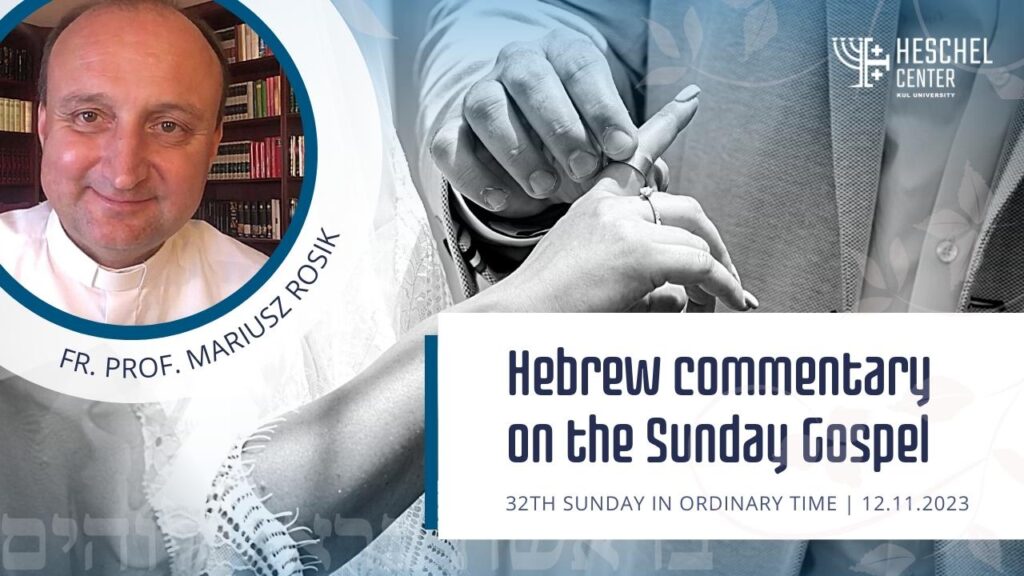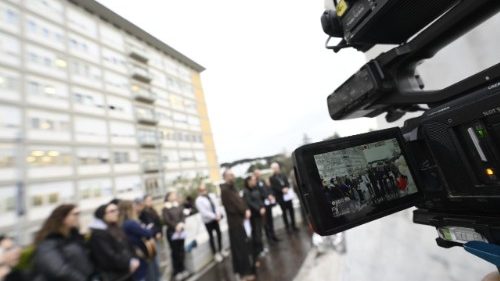Heschel Centre for Catholic-Jewish Relations at the Catholic University of Lublin
12 November, 2023
2 min
Who were the virgins in Jesus’ parable at the Jewish wedding?
Learning about Jewish wedding customs can help you understand the parable of the Wise and Foolish Virgins. Jesus describes the moment when the bridegroom and his friends set out for the bride’s house, and her friends go out to meet them, explains biblical scholar Fr. Prof. Mariusz Rosik in a commentary for the Heschel Center […]

Learning about Jewish wedding customs can help you understand the parable of the Wise and Foolish Virgins. Jesus describes the moment when the bridegroom and his friends set out for the bride’s house, and her friends go out to meet them, explains biblical scholar Fr. Prof. Mariusz Rosik in a commentary for the Heschel Center of the Catholic University of Lublin for Sunday, November 12. He stresses that Jesus, referring to the Jewish wedding tradition, calls for readiness and vigilance for his second coming at the parousia.
The knowledge of Jewish wedding traditions is the key to understanding Jesus’ parable of the wise and foolish virgins. On the eve of the nuptials in the evening, the groom and his friends would go to the bride’s father’s home. “Dressed in ceremonial robes, he headed the procession, accompanied by male friends. Chants were then performed, largely based on the text of the Song of Songs,” the biblical scholar points out. “The bridesmaids from the bride’s home came to meet the bridegroom while the bride was still under her father’s protection,” he adds. The two retinues would then meet halfway, proceeding together to the bride’s home.
As Fr. Rosik points out, Jesus’ parable of the wise and foolish virgins concerns the moment when the groom arrives at the bride’s house, and her friends come out to meet him. “Night is approaching, so they must have their lamps lit; they are olive lamps. Then, some of the bridesmaids realized they were running out of oil. When they went to the city to refill the oil in their lamps, the bridegroom came and closed the doors of the wedding house,” the biblical scholar explains. Only in this context does the explanation and message of the parable become eloquent. “This is how Jesus calls us to look forward to His second coming at the Parousia, in an attitude of readiness, expression of which is a lit lamp,” concludes Fr. Mariusz Rosik. “The oil in the lamps here can be a symbol of the good deeds to do in anticipation of the day of the parousia,” he adds in conclusion.
The entire text of the commentary is on the website of the Heschel Center of the Catholic University of Lublin:
https://heschel.kul.pl/who-were-the-virgins-in-jesus-parable-at-the-jewish-wedding,art_104858.html
Related

Pope Francis spent a peaceful night
Exaudi Staff
02 March, 2025
1 min

Pope Francis has had a peaceful night
Exaudi Staff
25 February, 2025
1 min

What should the boyfriend or girlfriend I should find be like?
Patricia Jiménez Ramírez
24 February, 2025
4 min

The Pope spent a quiet night at Gemelli
Exaudi Staff
23 February, 2025
1 min
 (EN)
(EN)
 (ES)
(ES)
 (IT)
(IT)

